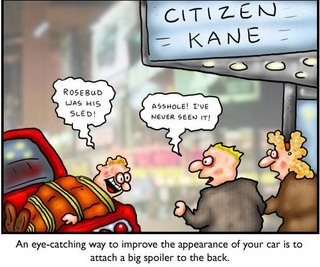Secrets of the Silver Screen, 5
One of the reasons I love talking about screenplays is that the story must be tight in a movie--characters and plot must be developed in ~2 hours--and so screenplays can yield easily
 highlighted lessons for the writer. As it turns out, I did take my kiddos to see Disney’s newest baby, Eight Below, this weekend. I’d read a few reviews about this flick, and I was especially interested in examining what Roger Ebert had to say about it working due to the emphasis placed on the dogs’ POV.
highlighted lessons for the writer. As it turns out, I did take my kiddos to see Disney’s newest baby, Eight Below, this weekend. I’d read a few reviews about this flick, and I was especially interested in examining what Roger Ebert had to say about it working due to the emphasis placed on the dogs’ POV. While telling so much of the story from the canine perspective was interesting, there were so many other essential POVs layered in this wagging tale that I didn’t find myself struck with what Ebert saw so much as I noticed something else: the way screenwriter David DiGilio escalated tension, as opposed to merely giving the characters one random challenge after another.
If you’ve seen the film or don't think you ever will, continue on with me, but if you haven’t seen it yet and think you might, you may want to stop here as there are spoilers ahead.
Here's the setup and the breakdown:
The story begins at the worst time of year for travel in Antarctica - right before the harsh winter season when everyone evacuates. A scientist needs to travel out on the ice in order to find what he believes may be a meteor from Mars. Because of the iffy conditions, they are forced to use the dogs instead of the snow mobiles, though they're conscious of weighing them down too heavily.
* The group is advised to pack it up before the doc can reach the meteor, as some low-pressure systems are bearing down on the region and the weather could turn treacherous soon.
* The doc pleads for just a few hours in the region he believes the rock to be. He convinces the guide, and they do find the rock, however they are now hours off schedule.
* The storm worsens, and the people at the base camp are unable to reach the team on the ice to warn them.
* One of the dogs is injured in an effort to get them back to base.
* The doc has a huge fall trying to call the base camp. His fall cracks the ice and lands him in the water where he nearly drowns.
* He "sticks" himself to the ice to save himself in the short term, though the ice is frigid, and he is at great risk.
* The dogs pull him free with difficulty, but they learn the doc has broken his leg.
* The doc is no longer able to help on the journey back to base. He is practically mummified in blankets. The guide is also injured; his wet, cold hands may be frost-bitten.
* The group finally returns to the base camp. The doc and guide need to be flown out immediately, along with the scientists' buddies, as the storm is nearly upon them. There is no room in the chopper for the dogs, though the pilot vows to return within a few hours for them.
* Just as they are about to leave, one of the dogs slips from his collar. People take the time to more tightly secure each of the dogs before getting on the chopper and leaving.
* The storm--the worst in 25 years--makes it impossible to safely go back to retrieve the dogs.
* The guide, who is recovering from his injuries, tries every conceivable thing to get back to his dogs, but is constantly thwarted. No planes can be spared; they will not return to the base until Spring.
And that's just the set-up! At this point, the movie is told about 75% of the time from the dogs' POV. If you're now intrigued, then this may be a good place to stop reading and go see the film. Otherwise, keep going...

* One of the dogs manages to break free, and the others follow suit. Many days have passed; some dogs are able to slip from their collars due to weight loss. One dog, the oldest, does not make it past this point, dying in his tightened collar. The stakes are clearly very high for the remaining seven dogs.
* The storm intensifies.
* The dogs struggle for comfort and for food, catching an occasional bird by working together. One dog is injured and dies; six remain.
* Unable to leave his deceased buddy, one dog is separated from the rest. (They've been alone now for 133 days.)
* The lone dog spars with a dangerous leopard seal in a struggle for personal survival and his quest for food. Though the others finally find him, Maya, the "mother" of the group, is gravely injured.
* After many days of slow healing, Maya seems to have lost the will to survive; they have been alone for 175 days.
The guide, meanwhile, has found a way back to Antarctica, though the boat he's in is stuck in the ice and snow, thanks to the brutal winter. At this point, you can see it coming: The guide eventually makes his way back to camp and recovers the remaining dogs, including Maya, leading to our happy ending. But what a ride - fabulous story tension through escalation of conflict. Though some might call it "mush," I really enjoyed this film.
Now I ask you: Do any other writers lean over to their kids mid-film and say things like, "You see how the conflict is evolving? That's good storytelling!" My poor children; they are doomed.

 posted by Therese Walsh at
posted by Therese Walsh at 


0 Comments:
Post a Comment
<< Home